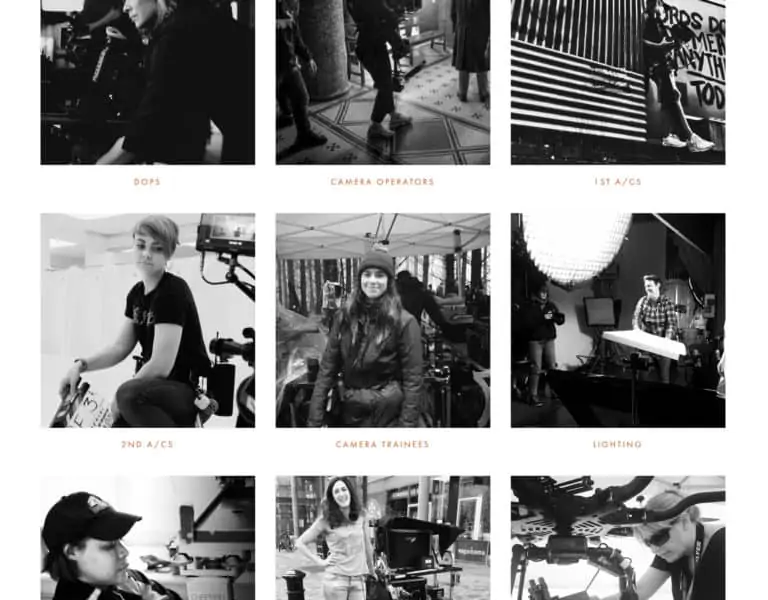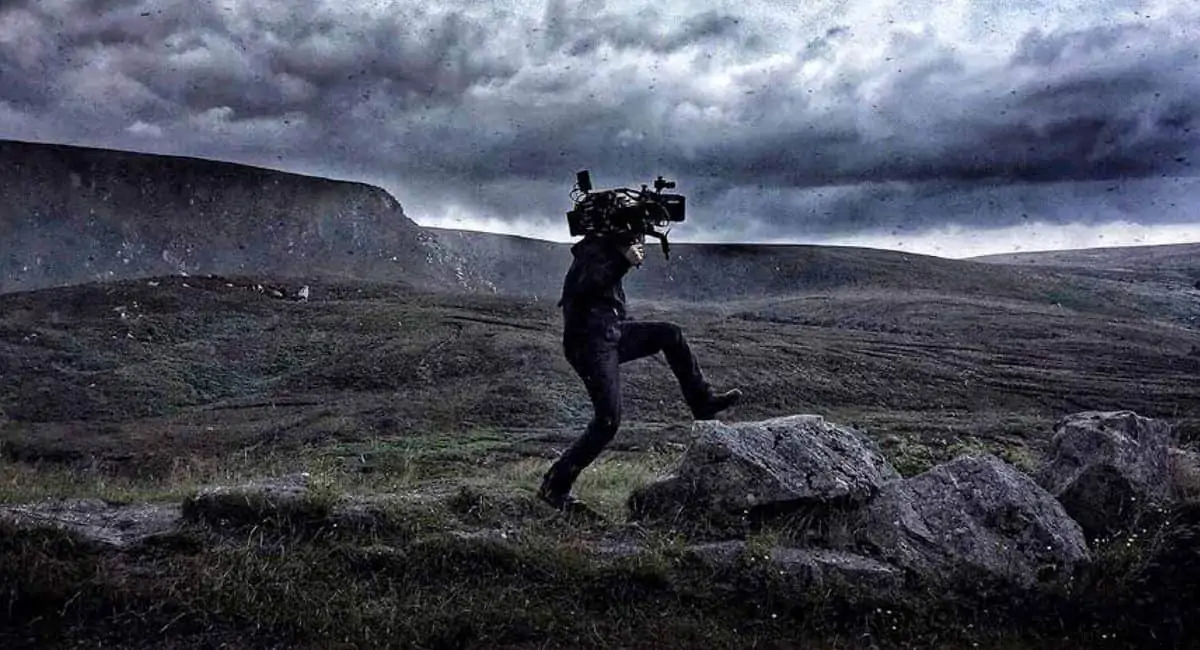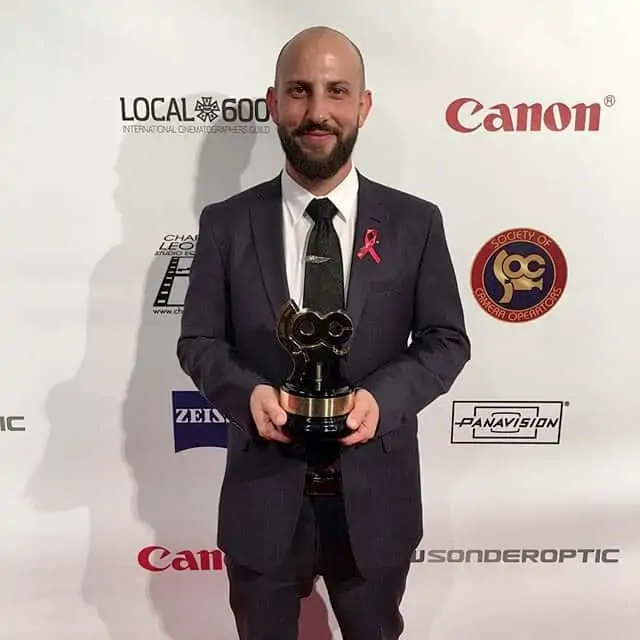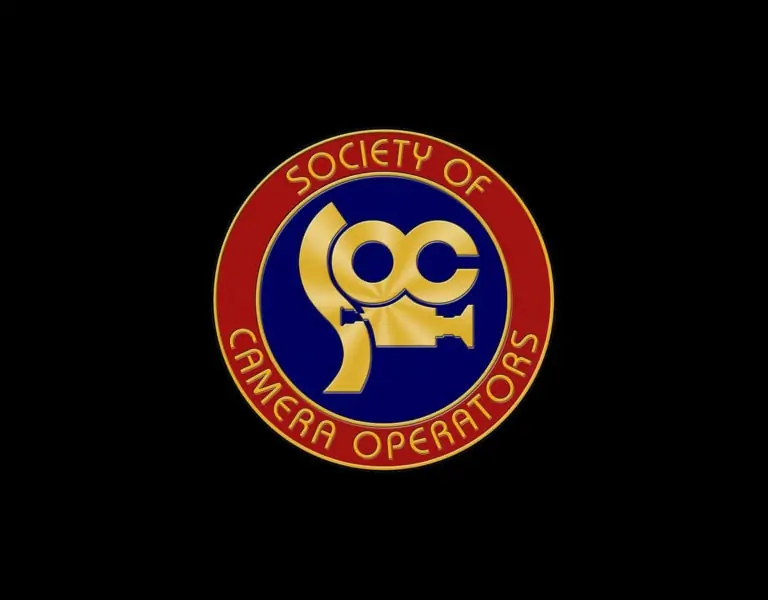I am A-camera
GBCT News / John Keedwell
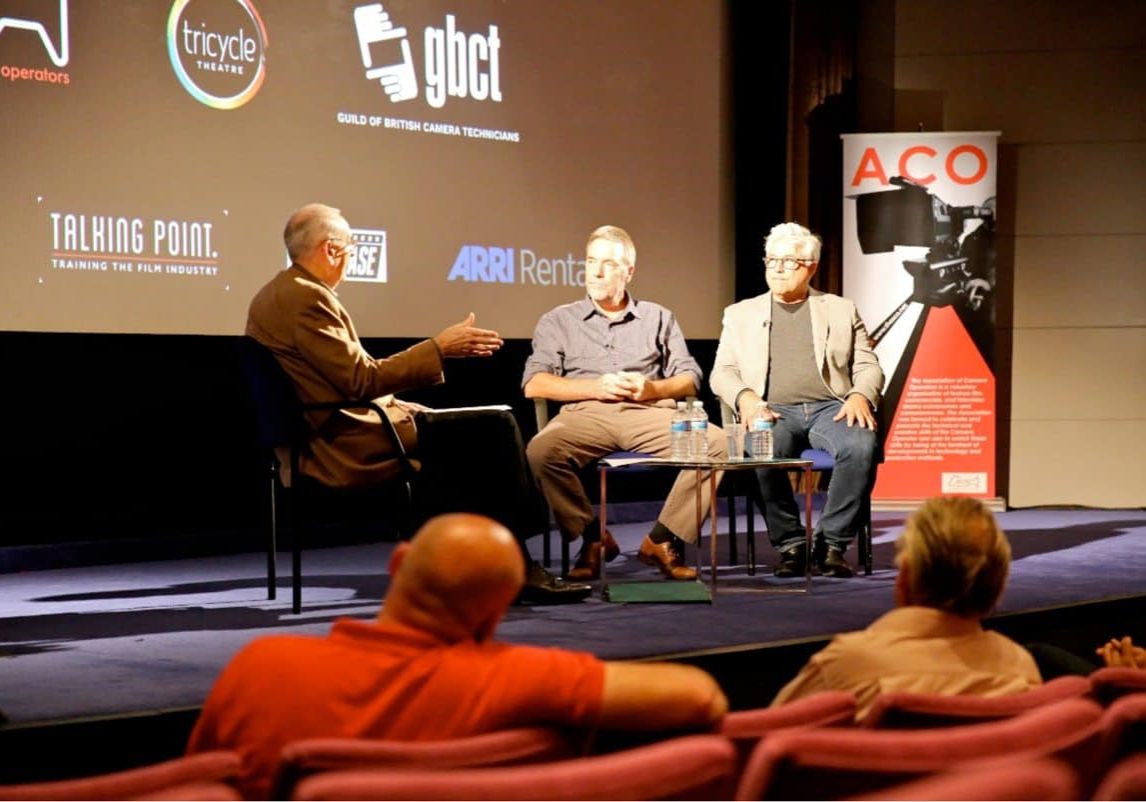
I am A-camera
GBCT News / John Keedwell
A first-time Q&A event collaboration between the ACO and the GBCT – proved a resounding success. Over 120 industry enthusiasts, from ACO and GBCT members through to film school students, filled the Tricycle Cinema in London recently for what was a thoroughly insightful and entertaining glimpse into the careers of two leading Hollywood camera operators.
Led by UK cinematographer Phil Méheux BSC and GBCT, the discussion centred around specific scenes from Oscar-winning films such as Saving Private Ryan (1998, DP Janusz Kaminski) and Birdman or (The Unexpected Virtue of Ignorance) (2014, DP Emmanuel Lubezki AMC ASC). Two leading camera operators, Chris Haarhoff SOC and Mitch Dubin SOC ACO, shared many candid personal accounts and anecdotes of their experiences with the likes of Steven Spielberg and Alejandro Inarritu and the creative challenges, diplomacy and collaborative skills that are required of A-camera operators.
The lively and discursive Q&A was followed by further lively conversations in the Black Lion pub across the road – which went on for several hours. The event was recorded and will be available for others to view once edited. Thanks go to Chris, Mitch and Phil, the crew and the event sponsors: ARRI Rental, 1 Film Unit, Cinelease, Talking Point, Riskbox Insurance and The Tricycle Theatre.
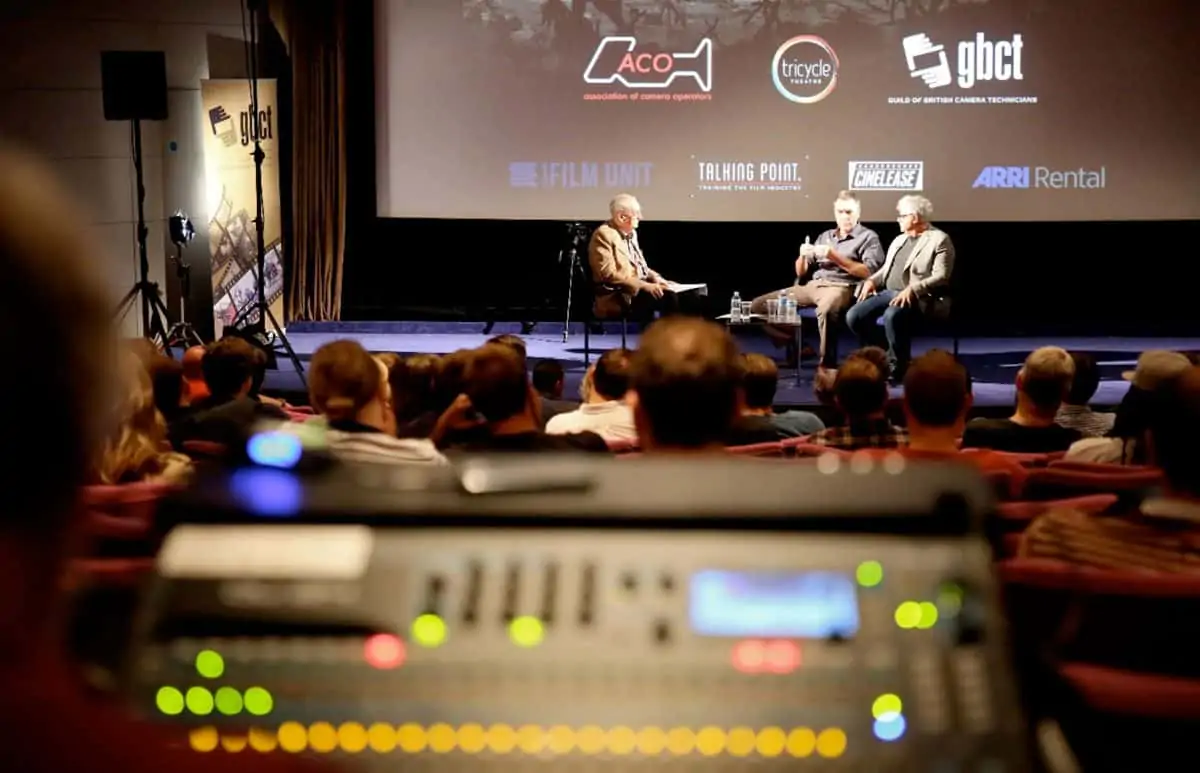
Crew and Organising Team:
Peter Cavaciuti GBCT, Assoc BSC & ACO President;
Emma Edwards GBCT (Stills);
Deanne Edwards (GBCT organiser);
Jason Ellis ACO (Lighting & ACO Organiser);
Gwyn Evans (DCP, Editor & Colourist);
Tim Hale (Projectionist for Tricycle);
Ceri Hughes (Floor Manager);
Gareth Hughes GBCT & ACO (ACO Organiser & Editorial);
Melanie Jansen GBCT Camera Trainee (Camera Asst);
Clive Jackson GBCT, Assoc BSC & ACO;
Mitchell King (Security);
Graham Martyr GBCT (Camera Supervisor);
Richard Merrick IPS (Sound Supervisor);
Chris Plevin GBCT & ACO (DCP & Title Card);
Simon Poulter (Camera);
Max Rijavec GBCT & ACO (Camera);
Peter Robertson GBCT, Assoc BSC & ACO;
Benjamin Treplin ACO (Posters);
Kirstie Wilkinson (Camera) - With assistance from: Ray Andrew ACO;
Jamie Harcourt GBCT, Assoc BSC & ACO;
Tom Wilkinson GBCT & ACO.
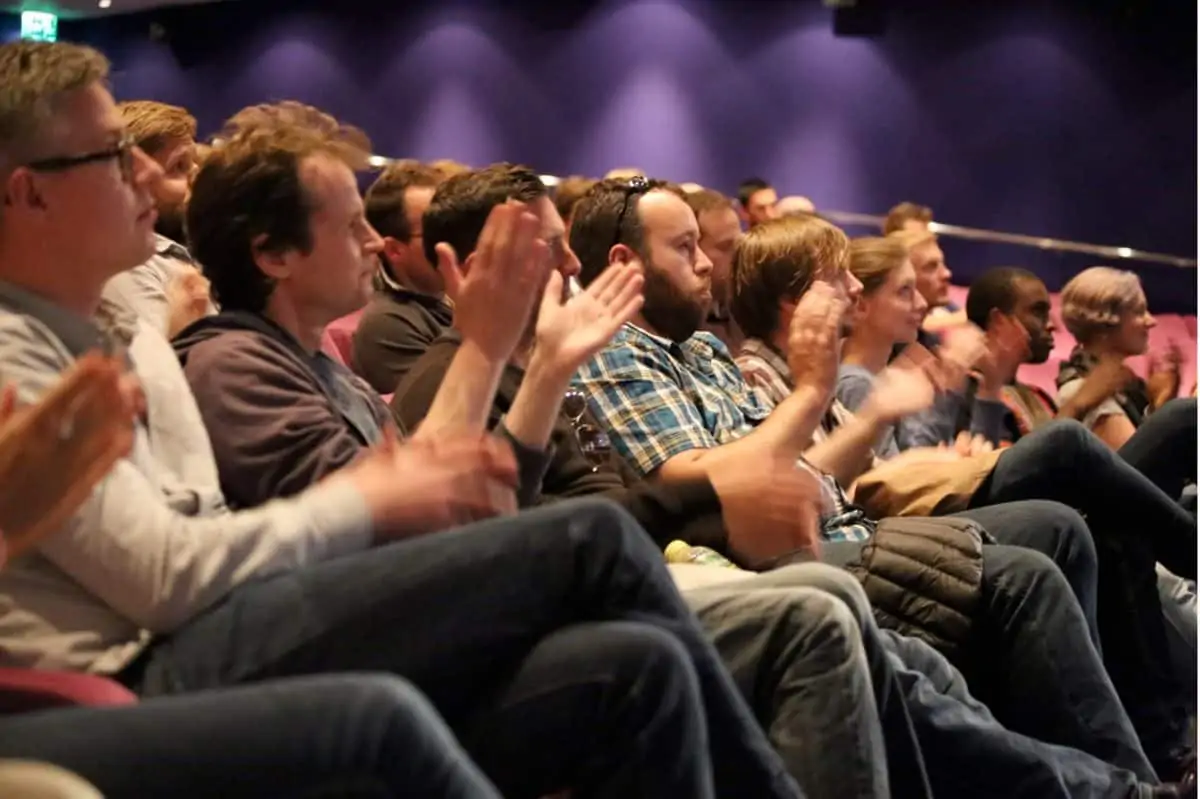
Where is the camera business going?
The new innovations at trade shows have appeared somewhat lacklustre and tired, with very little appearing in real innovation. Don't get me wrong, there have been startling technological advances in camera, lighting, lenses, camera rigs, CGI, sound, post production, distribution and projection. Yet there has been nothing really revolutionary for a few years now. On reading that back that just reminded me of the "What have the Romans ever done for us?", scene in Monty Python's Life Of Brian (1979, DP Peter Biziou BSC), but I digress.
For example, in the camera department we have had truly inspiring ultra-high-resolution sensors built into ever smaller and lighter camera bodies, making the flexibility of movement and rigging cameras in confined spaces a great deal easier.
Lens technology has had to keep up with the huge resolution ramp in camera sensors, and some remarkable glass tools have been produced. In lighting, too, there has been a revolution in LED technology, with less heat output, lower power use and the advent of bi-colour LEDs meaning the lamp can be any colour temperature you now wish at the turn of a wheel – all in the same unit.
Yes, there have been fantastic focus and lens control aids, camera rigging devices and drone technology, and now metadata of all the camera and lens parameters is being recorded and much more.
Yet in terms of camera ergonomics and design it's essentially a box with a large hole in one end where the lens attaches. (Apologies to all the camera designers who go to great pains to produce a visually exciting exterior that is also what the camera department ask for in terms of functions). Whilst this is serving the business and is very functional, there are some small camera systems in the lower-priced end of the market that could be worth looking at and adapting for the bigger sensor cameras.
For example, the DJI OSMO is a small handheld, gyro-stabilised, gimbal camera system that could have potential for some fantastic shots in the right hands. This is a handheld device that has an interchangeable camera head and can be operated by a small monitor and software, or most likely, a Smartphone. The classic shot in the original Rocky (1976, DP James Crabe) film where Stallone runs up the steps of the art museum is now a classic cinema icon, yet that shot was made by the very first uses in a movie of the Steadicam invented by Garrett Brown. That shot made the audience gasp "Wow! How did they do that?", as it had never been possible before. There have been shots that do that to the audience since then, but at the time this was truly ground-breaking.
Since then there have been huge advances in technology and computers to make the stable movement of the camera more readily available, and cameras have been put in places never thought possible even 30 years ago. The thought of using a small, high-resolution camera, the size of a matchbox, in a major science fiction movie would have been laughed at even a few years ago, yet that happened in The Martian (DP Dariusz Wolski) in 2015. Inside the cab of the transporter there are several GoPro cameras used as storytelling pictures in several of the scenes.
Going back to the idea of camera movement and storytelling, the Rocky sequence told a story and enhanced the story. It added a sense of achievement and success over all odds that became a truly memorable scene. Even today, buses full of children pile out and run up the steps to emulate the scene in the movie, and to emphasise there is a way to achieve goals if you stick at it and keep going even when the going gets tough and you feel like quitting. That is how much the movies and camera shots have a positive influence over the audience.
Since then the Steadicam has developed into a highly-sophisticated and superb tool for the DP and director to use to enhance the storytelling process. It's impossible to tell if that film would ever have made it quite so massive and started Stallone's long career without that one classic Steadicam shot.
Cameras are getting smaller, without doubt, and the question is: does that create more creativity, or does it make camera systems very fiddly for the camera crew to operate? Well, both, of course! Camera lens focus rings and other bars systems have developed to be generic to any lens or camera and not specific to any camera manufacturer (with a few notable exceptions, of course). In terms of cars it is like being able to use an engine from a Mercedes in an Audi, for example. It just doesn't work like that in cars, although several cars do use the same platform and floorplan and simply change the bodywork for different markets. VW and Audi for example, and Citroen and Peugeot are made on the same production line next to each other, just rebadged and the trim changed. OK, back to cameras.
I suppose the question really is where does cinematography go next? I guess the answer is it goes where the story is the important part, and the technology should come second, and not get in the way of making the story flow.
- John Keedwell
Often the robustness of the system comes with the physical size and weight, and cutting the camera size means the mount can be smaller, but perhaps not as stable and robust for high-G applications, such as car chases and other action shots, etc.. However, in a different scenario a smaller hand held camera such as the DJI OSMO could have potentially done the Rocky shot if the technology had been invented and available at the time. A Steadicam is a fantastic tool for the creativity of telling a story, and there have been magnificent shots over the years that would not be possible any other way. Operating one (as anyone who has ever strapped one on might tell you) is nowhere near as easy and effortless as it looks – it needs a really dedicated and physically-fit operator who has honed their craft and skills over many shoots and years. It is not a tool to strap on and run about all day without any training. That is a recipe for injury, disaster and expensive cameras can get broken. It needs dedication and experience, and Steadicam operators deserve great respect.
So it is all about picking the right tool for the job and having the team of people around to make sure they know the intricacies and potential pitfalls of the equipment and being able to foresee issues. Training is therefore paramount, and a great team of technicians is crucial to the success of any shoot. The GBCT excels in this area, of course and has a wide variety of excellent, world class talent to make sure your shoot goes as smoothly as possible. There are some world class Steadicam operators there, of course. Make sure you get a copy of the GBCT Crew Directory.
I suppose the question really is where does cinematography go next? I guess the answer is it goes where the story is the important part, and the technology should come second, and not get in the way of making the story flow. It almost needs another Steadicam moment to revolutionise the business, although there are many more tools available now than when Rocky was made. It's how the tools are used and operated that makes the difference.
Perhaps the virtual world of computer graphics is an area to study closely, as the advances in the past 15-20 years have been truly astonishing. To see what is possible, CGI is perhaps the greatest storytelling advance in recent years. Look at The Lord Of The Rings (2001, DP Andrew Lesnie ACS), Avatar (2009, DP Mauro Fiore), and the opening scene of Gravity (2013, DP Emmanuel Lubezki AMC ASC). There are more subtle additions now to movies we are just not aware of.
The virtual reality headsets seen at IBC in Amsterdam for the past few years are interesting for some applications, but there is a long way to go yet to get a truly immersive experience, but I am sure it will come if the audiences switch on to it and there is a demand. It could be a great tool for some training, but it is again a device the audience has to wear, which may go the way of many other devices.
At the end of it all, we are storytellers, who happen to use magnificent technology to tell a story. Going back in time the ancients told stories by painting on cave walls, and blowing paint over their hands to form iconic images to last many hundreds of thousands of years. Cinema has been around for a little over a hundred years, so what will the next 10 and 20 years bring? I hope it is stories we learn from, are moved and educated by, and will last 100,000 years ahead like the cave dwellers. Whatever the technology, there needs to be someone who understands how to get the best out of the equipment, and who can put things right if they go wrong. Recognise the skills of the technical aspects behind the camera, and find the right people to put in place for your next production by taking GBCT crew people with you.
